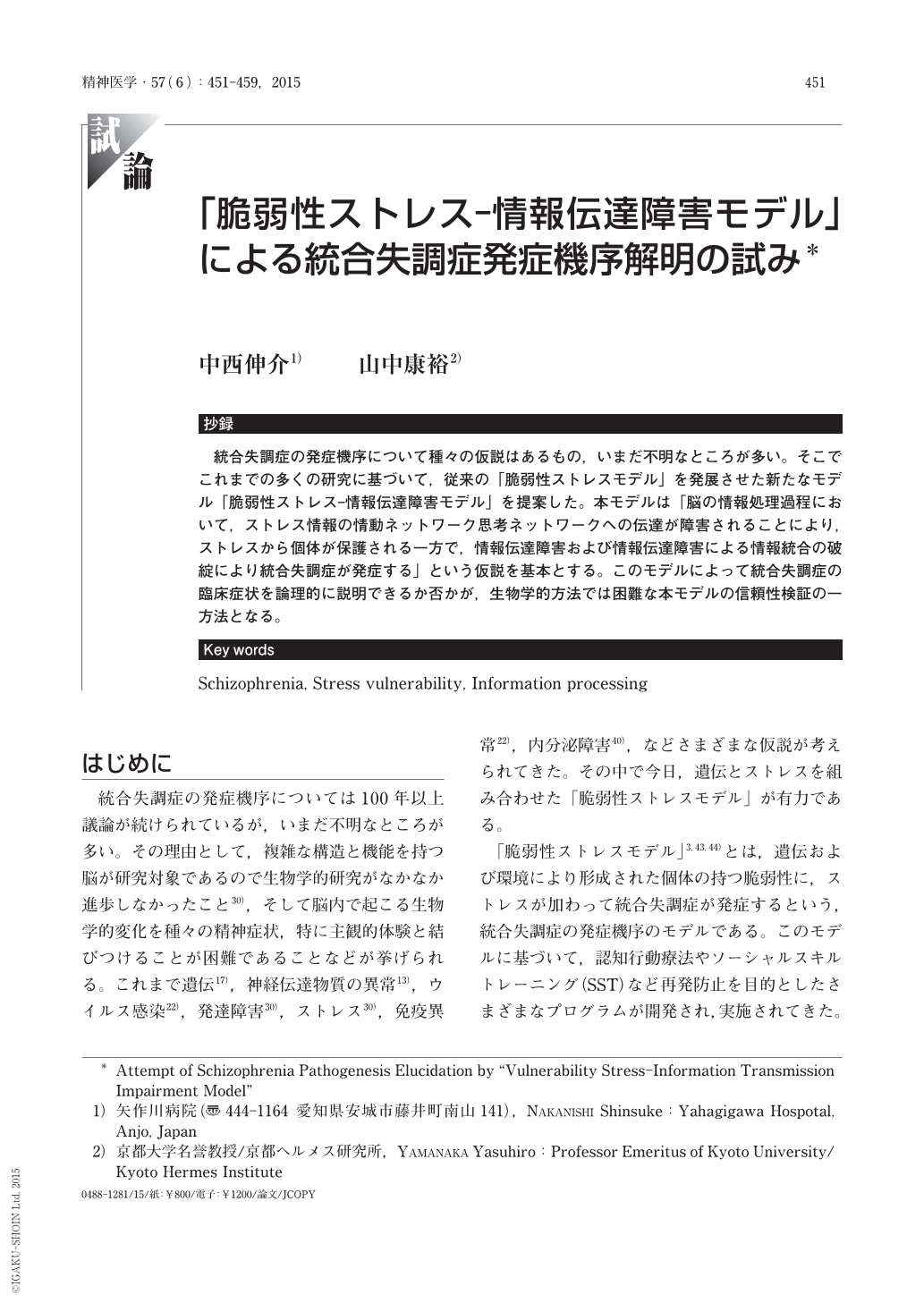Japanese
English
- 有料閲覧
- Abstract 文献概要
- 1ページ目 Look Inside
- 参考文献 Reference
抄録
統合失調症の発症機序について種々の仮説はあるもの,いまだ不明なところが多い。そこでこれまでの多くの研究に基づいて,従来の「脆弱性ストレスモデル」を発展させた新たなモデル「脆弱性ストレス-情報伝達障害モデル」を提案した。本モデルは「脳の情報処理過程において,ストレス情報の情動ネットワーク思考ネットワークへの伝達が障害されることにより,ストレスから個体が保護される一方で,情報伝達障害および情報伝達障害による情報統合の破綻により統合失調症が発症する」という仮説を基本とする。このモデルによって統合失調症の臨床症状を論理的に説明できるか否かが,生物学的方法では困難な本モデルの信頼性検証の一方法となる。
A variety of hypotheses for the pathogenesis of schizophrenia exist, nevertheless, many aspects remain unknown. Therefore, founded upon on the large amount of research conducted to date, we would like to propose the existing “vulnerability stress model”, be further developed into a new model:a “vulnerability stress-information transmission impairment model”. This model is founded upon the hypothesis that while on the one hand an individual is protected from stress damage because the data processing mechanism in the brain is protected from stress information transmission damage to the emotional network and thought network, on the other hand, an information transmission impairment, and failure of proper information integration caused by the information transmission impairment, leads to the development of schizophrenia. One way to verify this difficult to biologically validate model is seeing whether the clinical symptoms of schizophrenia can be logically explained by this model or not.

Copyright © 2015, Igaku-Shoin Ltd. All rights reserved.


